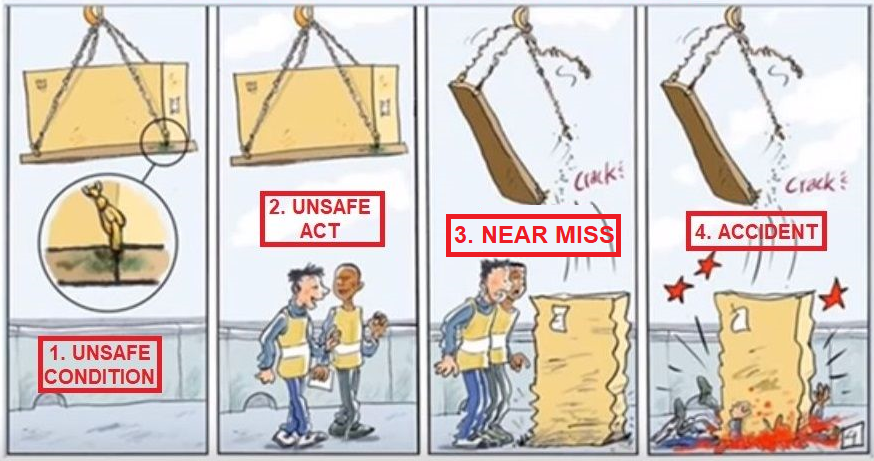Field activities are full of hazards & risks. Workers “MUST” strictly adhere to the “Health & Safety” policy & guidelines of your respective organizations & labor office/law.
Following are a few of the basic but important Safety Terminologies for your quick reminder. (simple definitions without details):
Hazard: Any danger or something, which has the potential to cause harm, injury, or damage.
Risk: The uncertainty of something, which may happen or may not happen, but if it happens, it has the potential of harm, damage, or loss. (Risk=Likelihood x Severity)
Unsafe Condition: An observed condition which if left unattended or not corrected has the likelihood or chance to result in a loss.
Unsafe Act: Something a person does that can cause an accident, injury, or damage.
Near-miss: An event or chain of events that could have resulted in a fatality, injury, illness, and or damage (loss) to people, assets, the environment, the organization’s reputation, or third parties.
Accident: An unexpected, unplanned, unwanted, but controllable event that disrupts the work process and causes injury to the people and/or damages to material/property.
Incident: An unplanned, unwanted, but controllable event that disrupts the work process and has the potential of resulting in injury, harm, or damage to persons or to material/property.
Corrective Action: Action to eliminate the cause of a detected nonconformity or other undesirable situation.
Preventive Action: Action to eliminate the cause of a potential nonconformity or other undesirable situation.
Hazard Identification: The process of recognizing that a hazard exists and defining its characteristics.
Risk Management: The process of identification, analysis, and risk management systematically either acceptance or mitigation of uncertainty loss.
Risk Evaluation: Consideration of the risk analysis results to determine if risk reduction is required.
Risk Analysis: Systematic use of available information to identify hazards and estimate the risk.
Acceptable Risk: Risk that has been reduced to a level that can be tolerated by the organization w.r.t to its legal obligations and its own H&S policy. (ALARP: As Low as Reasonably Possible).
Risk Matrix: The level of risk can be calculated as the product (x) of the probability that harm occurs and the severity of that level of potential harm (Probability x Severity).
The attached picture should remind you about important safety aspects of field activities.
Always remember that all near-misses should be reported & the cause should be fixed to avoid incidents & accidents.
#SafetyFirst #AccidentPrevention #OccupationalSafety #Risk #Hazard #Safety #RiskAssessment
